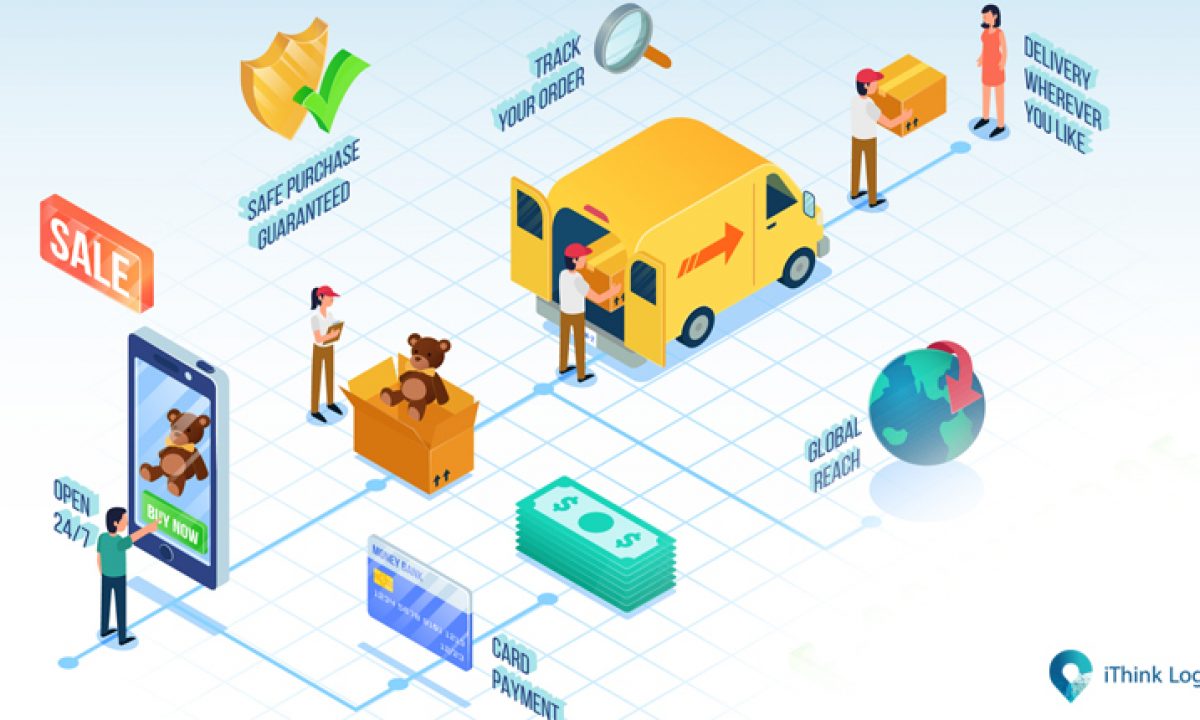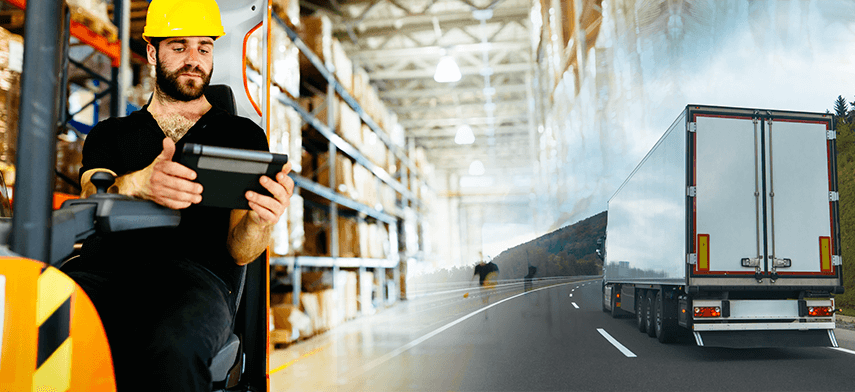Last-mile delivery is the final yet critical step in the logistics pipeline. The efficiency of this stage directly influences customer satisfaction. This article dives deep into the intricacies of last-mile delivery, the challenges faced, and how third-party logistics (3PL) can be a game-changer for businesses. So, if you’re looking to refine your delivery process or simply understand the logistics landscape better, this is a must-read!
What is Last-Mile Delivery?
Last-mile delivery refers to the final step of the delivery process, where a package is taken from a fulfillment center or warehouse to its final destination – usually the customer’s home. It’s the “final leg of the delivery journey” and is paramount in ensuring that goods reach their destinations promptly. This last leg often poses the most logistical challenges and is crucial for customer satisfaction.
Why is Last-Mile Delivery Critical?
Speed of delivery has become an essential factor in determining customer satisfaction. Customers now expect faster, more accurate delivery options. The delivery experience, from the speed of the last mile to the condition of delivered goods, directly impacts a business’s reputation and customer loyalty.
Challenges of Last-Mile Delivery
Last-mile delivery challenges range from unexpected delays, delivery costs, and ensuring timely delivery to the right delivery location. As delivery executives make several stops, optimizing the delivery route becomes essential. Factors like traffic, inaccessible locations, and failed delivery attempts further complicate the delivery process.
The Role of 3PL in Optimizing Last-Mile Delivery
Third-party logistics providers (3PLs) specialize in optimizing the delivery process. Partnering with a 3PL can help businesses effectively address the challenges of last-mile delivery. These logistics service providers have the expertise, technology, and fleet of delivery vehicles to ensure efficient final-mile delivery. They offer solutions like real-time order tracking, delivery management, and predictive analytics to optimize delivery routes and ensure customer satisfaction.
Benefits of Partnering with a 3PL for Last Mile
Collaborating with a reputable third-party logistics (3PL) provider for last-mile delivery offers businesses a range of benefits that contribute to enhanced operational efficiency and customer satisfaction. By leveraging the expertise and resources of a 3PL, businesses can:
- Reduce Delivery Times and Costs: 3PLs have intricate knowledge of local routes, traffic patterns, and optimal delivery windows. This enables businesses to significantly cut down on delivery times and associated costs, ensuring that products reach customers swiftly and efficiently.
- Increase Delivery Accuracy and Reliability: 3PLs employ advanced tracking and monitoring systems that provide real-time visibility into the delivery process. This enhanced tracking accuracy minimizes the likelihood of delivery errors, ensuring that products are delivered to the right recipients in impeccable condition.
- Improve Customer Satisfaction: A seamless last-mile delivery experience directly influences customer satisfaction. 3PLs excel at providing accurate delivery windows and transparent communication, allowing customers to track their orders in real-time. This level of transparency fosters trust and satisfaction among customers, who appreciate being informed about the progress of their deliveries.
- Access Specialized Last-Mile Delivery Expertise: 3PLs specialize in last-mile logistics and are equipped with the know-how to navigate the complexities of this critical stage. Their specialized expertise ensures that businesses can efficiently manage challenges such as optimizing delivery routes, handling unexpected delays, and finding the best approaches for inaccessible delivery locations.
- Scale Operations Seamlessly: As businesses grow, their delivery needs evolve. 3PLs offer the flexibility to scale delivery operations according to demand fluctuations. Whether it’s handling increased order volumes during peak seasons or expanding to new markets, 3PLs can accommodate these changes efficiently.
- Focus on Core Competencies: By entrusting last-mile delivery to a reliable 3PL, businesses can redirect their resources and energy toward their core competencies. This focus on core activities can lead to greater innovation, product development, and business growth.
How do Logistics Providers Enhance the Delivery Process?
3PL providers use advanced technology to optimize delivery routes, predict potential delivery issues, and provide visibility to both the company and the end customer. This ensures that the entire delivery process, especially the last-mile delivery process, is as efficient as possible. Moreover, by providing ecommerce fulfillment services, these third-party logistics providers ensure timely and efficient deliveries, enhancing the customer experience.
The Future of Last-Mile Logistics
The e-commerce boom has transformed the way consumers shop, leading to an exponential surge in the demand for swift and efficient last-mile delivery services. As the final touchpoint before a product reaches the customer, last-mile logistics has become a focal point for businesses aiming to enhance customer satisfaction. Technological innovations are reshaping the crucial logistics segment. Drones, once a science fiction concept, are now potential delivery agents. They are especially useful for hard-to-reach locations and peak delivery times. Their ability to bypass traditional road networks can drastically reduce delivery times and offer a unique customer experience. Similarly, autonomous delivery vehicles, equipped with advanced sensors and AI-driven navigation systems, promise to revolutionize urban deliveries by operating round the clock, reducing human error, and optimizing delivery routes in real-time.
For businesses, these technological advancements present a golden opportunity to redefine their delivery strategies. However, it’s not just about integrating the latest technology; it’s about aligning with the right partners who can harness these innovations effectively. Collaborating with forward-thinking last-mile delivery providers will be essential for businesses to stay ahead of the curve. These providers, with their expertise in emerging technologies, can offer tailored solutions that cater to specific business needs and customer preferences. As customer expectations continue to evolve, with a growing emphasis on speed, flexibility, and transparency, businesses that proactively adapt their last-mile logistics strategies will not only meet but exceed these expectations, solidifying their position in the competitive e-commerce landscape.
On-Demand Delivery: A Modern Trend
In today’s fast-paced digital age, the demand for instant gratification has permeated the realm of product deliveries. On-demand delivery services, which promise same-day or even hour-specific deliveries, have surged in popularity, reflecting a shift in consumer expectations. No longer content with standard delivery windows, modern customers are increasingly seeking immediacy in their purchases. This desire for rapid delivery is not just confined to essential items; it spans a wide range of products, from electronics to apparel. The willingness of customers to pay a premium for these expedited services underscores the value they place on time and convenience. For businesses, this burgeoning trend presents both a challenge and an opportunity. The challenge is to restructure traditional delivery models to fit these accelerated timelines and ensure seamless integration of logistics, inventory management, and delivery processes.
Recognizing the potential of this market, many delivery service providers are innovating their offerings to cater to the on-demand trend. By leveraging advanced logistics software, real-time tracking, and efficient route optimization tools, these providers are drastically reducing delivery times. Some have even introduced delivery windows as short as a few hours, allowing customers to choose specific time slots that fit their schedules. Furthermore, partnerships with local businesses and the establishment of strategically located fulfillment centers enable quicker access to inventory, facilitating faster dispatch and delivery. As the competition in the on-demand delivery space intensifies, businesses that can consistently deliver on their promises while maintaining cost efficiency will likely emerge as frontrunners, reaping the rewards of enhanced customer loyalty and increased revenue streams.
Cost Efficiency in Last-Mile Delivery
The intricacies of last-mile delivery often make it one of the most expensive components of the logistics chain. The challenges of navigating urban landscapes, dealing with traffic congestion, and ensuring timely deliveries to disparate locations can quickly escalate costs. With the right strategies in place, businesses can significantly mitigate these expenses. They can also enhance the efficiency of their delivery operations. One such strategy is route optimization, which involves using advanced algorithms and real-time data to determine the quickest and most fuel-efficient routes. By minimizing detours and delays, this approach reduces fuel consumption and time spent on the road. It also increases the number of deliveries that can be completed in a single trip.
In addition to route optimization, businesses can achieve cost efficiency by leveraging local delivery hubs. These hubs act as intermediary storage points, allowing for bulk shipments to be broken down and dispatched for final delivery, reducing the distance individual packages need to travel. Furthermore, diversifying the modes of delivery can also lead to significant cost savings. Using bikes in congested urban areas can bypass traffic. Delivery vans might be more suitable for larger packages or longer distances. The advent of drones also offers a glimpse into the future of last-mile delivery. It promises rapid deliveries with minimal human intervention. By adopting a multifaceted approach that combines technology, localized strategies, and a mix of delivery methods, businesses can achieve a balance between cost efficiency and service excellence in their last-mile delivery operations.
Ensuring Customer Satisfaction in the Final Delivery
The culmination of the delivery process is often referred to as the final stretch or last-mile delivery. It holds paramount importance in determining a customer’s overall perception of a business. This phase, more than any other, has the power to leave a lasting impression. Factors such as clear communication channels keep the customer informed, and punctual deliveries that adhere to promised timelines. They ensure the product arrives in impeccable condition. They also ensure that these components are not just added bonuses but essential to the process. These elements together set the tone for the post-purchase experience.
In today’s competitive market, multiple businesses offer similar products. The differentiator often lies in the quality of service, especially during the delivery phase. By prioritizing customer needs and preferences, businesses can tailor their final-mile delivery to offer a personalized experience. Whether it’s providing flexible delivery slots, real-time tracking, or ensuring safe and secure delivery, these nuanced touches can significantly elevate customer satisfaction. An efficient and customer-centric approach to last-mile delivery can transform a routine transaction into a memorable experience. It can also foster loyalty and encourage repeat business.
Conclusion
In the ever-evolving landscape of e-commerce and logistics, last-mile delivery stands out as a pivotal component in determining a business’s success and customer satisfaction. As the final touchpoint between a business and its customers, it carries the weight of the entire buying experience. Businesses can efficiently navigate complexities by using the expertise and technology of third-party logistics providers (3PLs). Innovation, customer-focused strategies, and partnerships with 3PLs are key. They will redefine the future of last-mile delivery. They will ensure timely, cost-effective, and satisfactory deliveries for customers worldwide.
Contact us today to create a tailor-made fulfillment plan to suit your business requirements and delight your customers.




